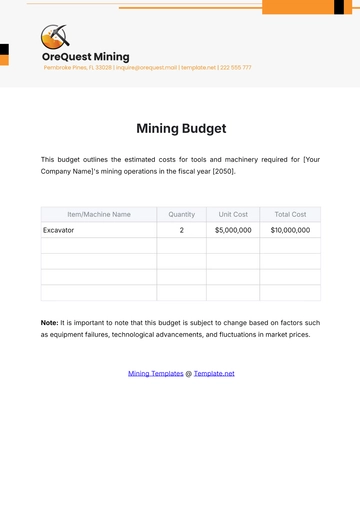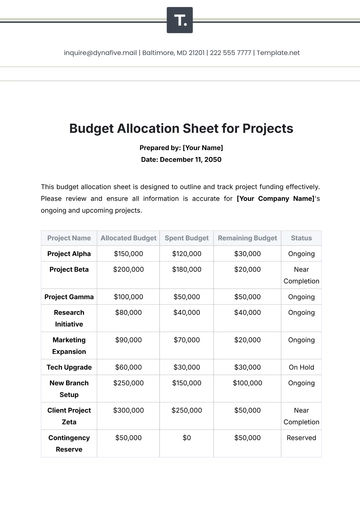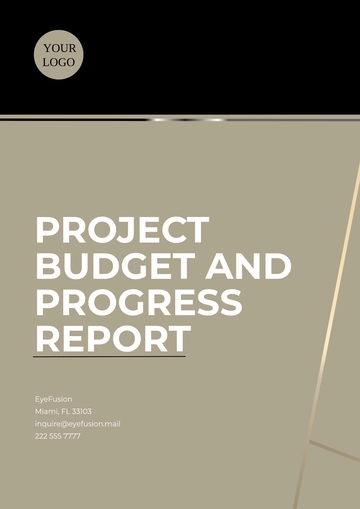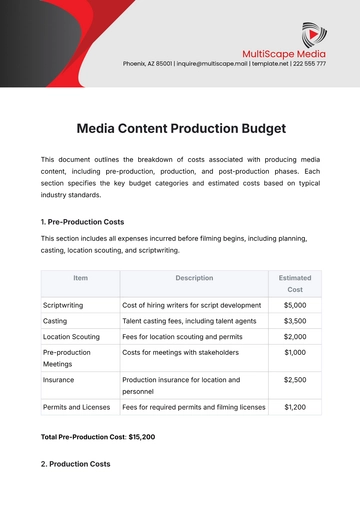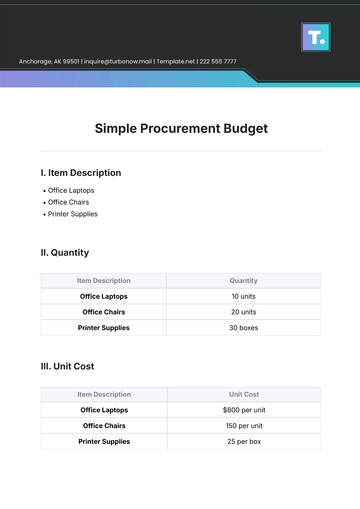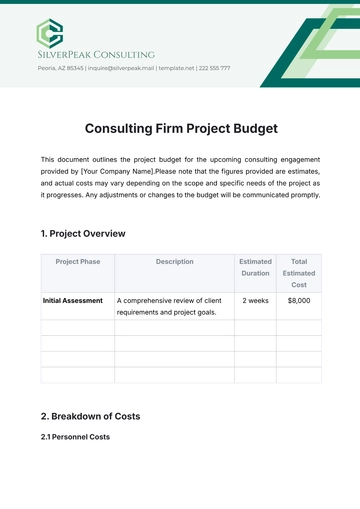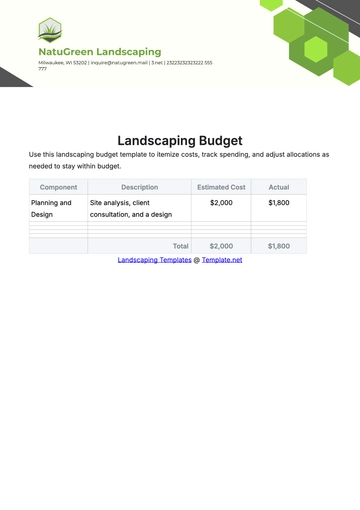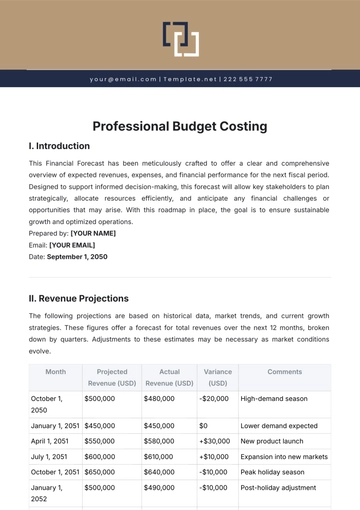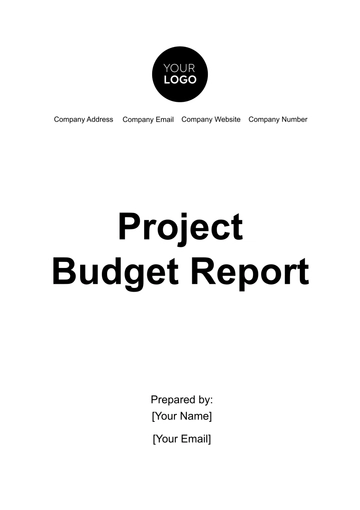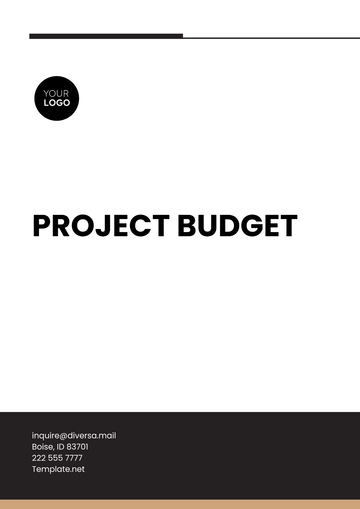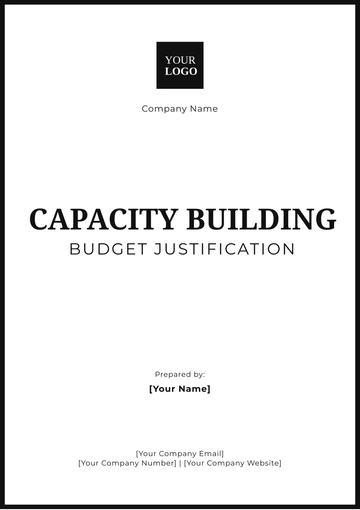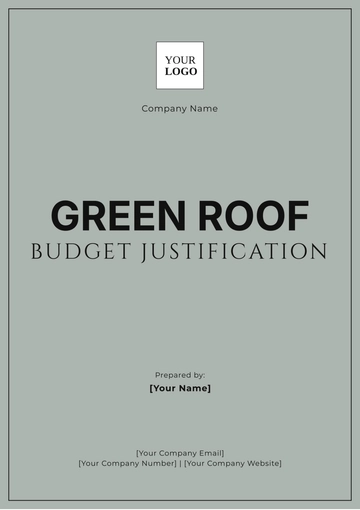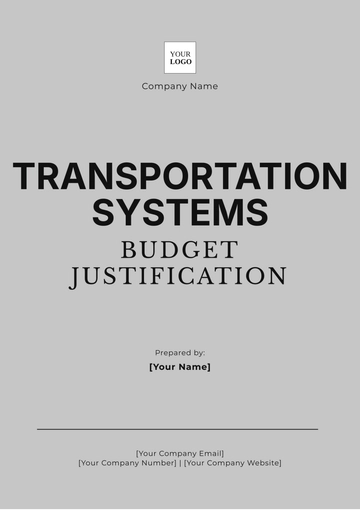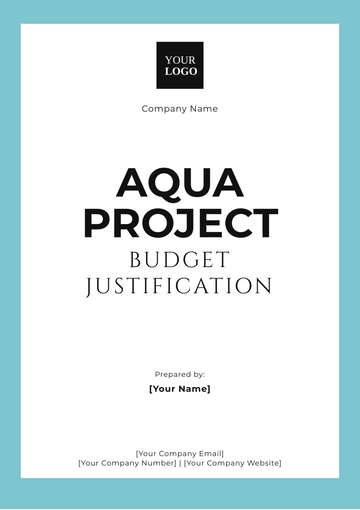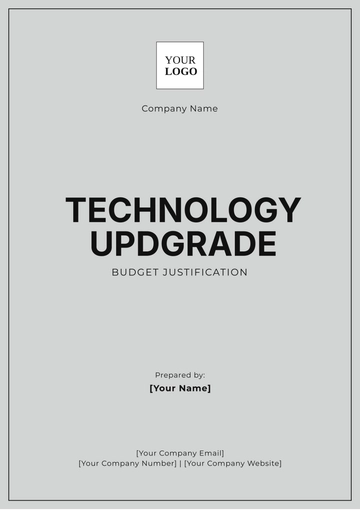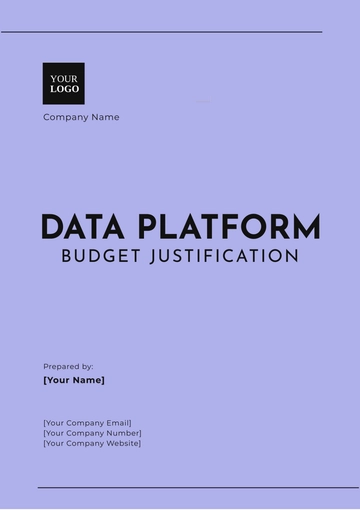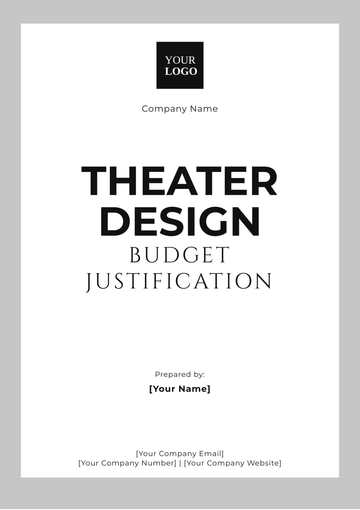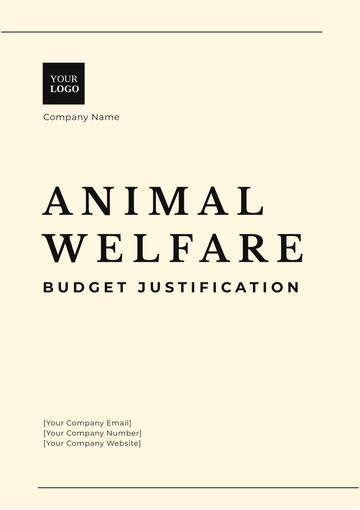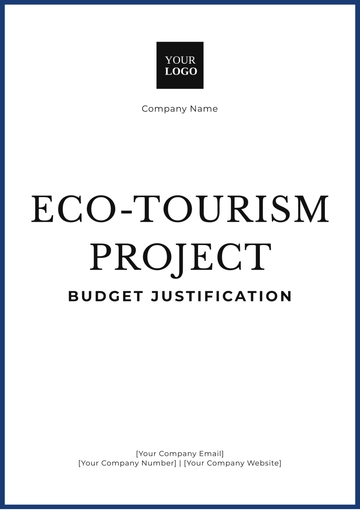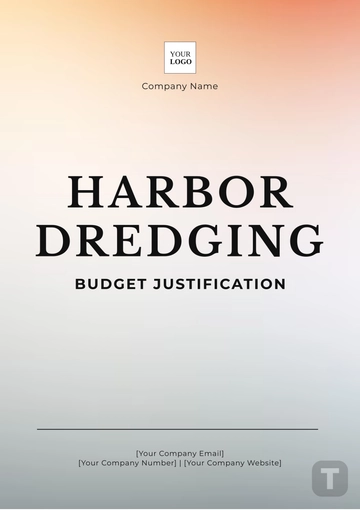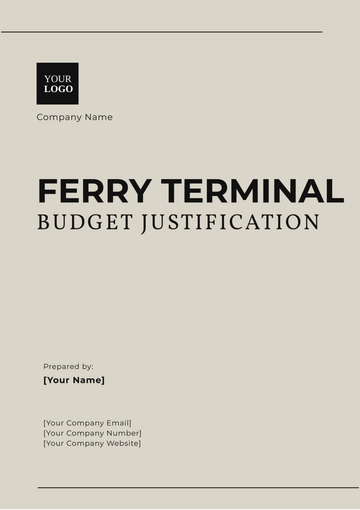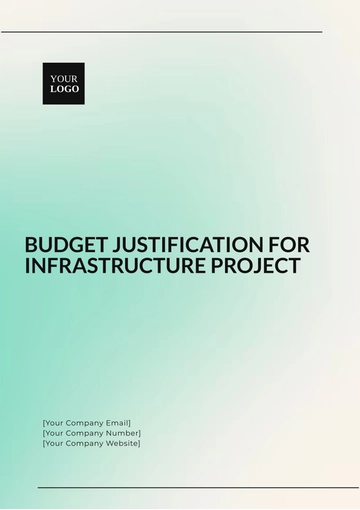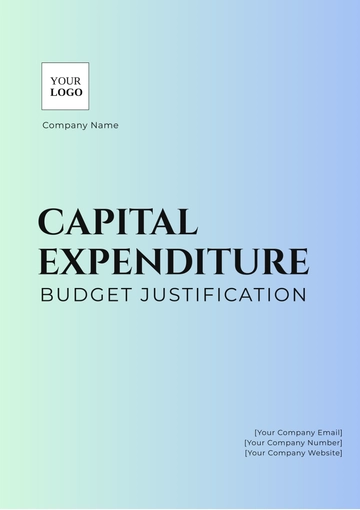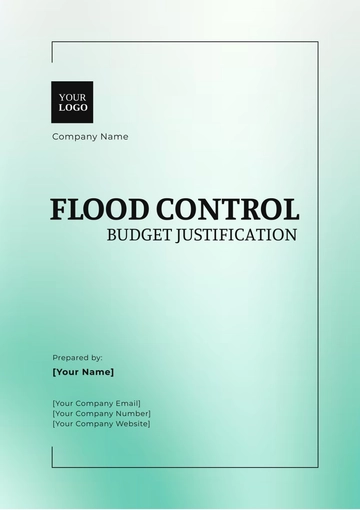Free Interior Design Budget Report
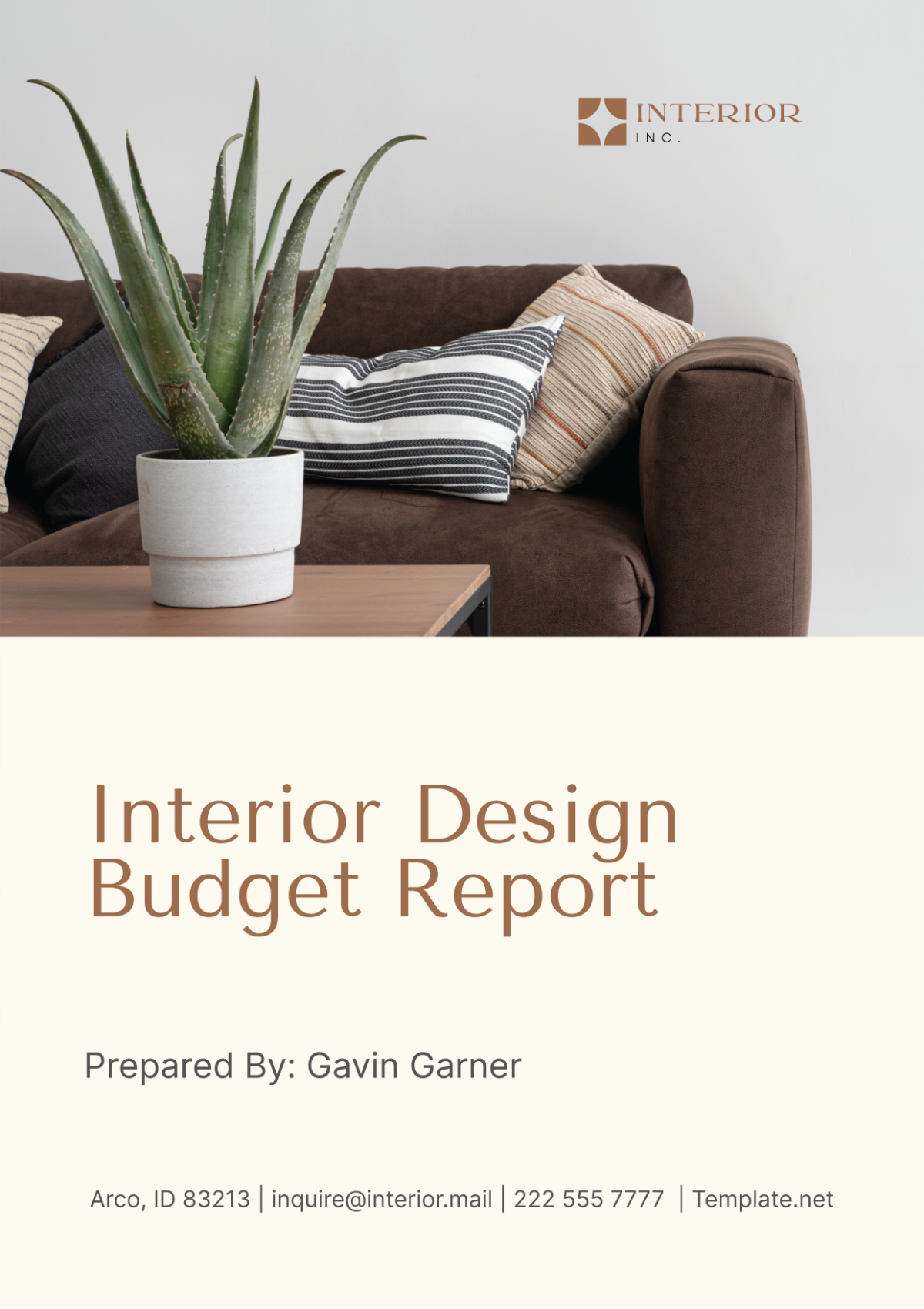
I. Executive Summary
A. Overview
Introduction
The following report provides an in-depth analysis of the budget for the interior design project executed by [Your Company Name]. It offers insights into the budget allocation, actual expenses, variances, and recommendations to optimize cost management effectively.
Purpose of the Report
This report aims to furnish stakeholders with a comprehensive overview of the financial aspects associated with the interior design endeavor.
It endeavors to evaluate adherence to the allocated budget, pinpoint any discrepancies, and propose strategies for enhancing budget efficiency.
Scope
The scope of this report encompasses all financial facets of the interior design project, encompassing expenses pertaining to furniture, fixtures, décor, labor, materials, and contingency.
It spans the entire duration of the project, from initial budgetary planning to the culmination of implementation.
Methodology
Data utilized in this report is derived from meticulous scrutiny of financial records, invoices, and project management documentation.
Comparative analysis of budget allocation and actual expenditures is conducted to identify disparities and evaluate budget performance.
II. Introduction
A. Project Background
Brief Description of the Interior Design Project
[Your Company Name] embarked on a transformative interior design project aimed at rejuvenating the ambiance of a commercial office space situated at [Address]. The overarching objective was to cultivate a modern, functional workspace conducive to heightened productivity and employee well-being.
Objectives and Goals
Enhance the aesthetic appeal of the office environment while preserving functionality.
Optimize spatial utilization to foster seamless workflow and collaboration among employees.
Integrate sustainable design principles to minimize environmental impact and promote eco-consciousness.
Adhere rigorously to the allocated budget without compromising on the delivery of superior design solutions.
B. Budget Overview
Total Budget Allocation: [$50,000]
Duration of Budget: [January 1, 2050 - December 31, 2050]
III. Budget Allocation
A. Categories of Expenses
Category | Budget Allocation ($) | Actual Expenses ($) | Variance ($) |
|---|---|---|---|
Furniture | [$15,000] | [$14,500] | [$500] |
Fixtures | [$10,000] | [$9,800] | [$200] |
Décor | [$7,000] | [$6,500] | [$500] |
Labor | [$10,000] | [$10,200] | [-$200] |
Materials | [$5,000] | [$4,700] | [$300] |
Contingency | [$3,000] | [$3,000] | [$0] |
B. Total Budget Allocation vs. Actual Expenses
Budget Item | Budget Allocation ($) | Actual Expenses ($) | Variance ($) |
|---|---|---|---|
Total Budget | [$50,000] | [$48,700] | [$1,300] |
IV. Major Expenses Breakdown
Category | Description of Items | Cost Breakdown | Supplier Details |
|---|---|---|---|
A. Furniture | Office desks, Chairs, Conference table, Filing cabinets | Office desks: [$6,000] Chairs: [$4,500] Conference table: [$3,000] Filing cabinets: [$1,000] | Supplier Name: [Supplier X] Contact Information: [Supplier X's Contact Details] |
B. Fixtures | Lighting fixtures, Shelves, Signage | Lighting fixtures: [$5,000] Shelves: [$3,500] Signage: [$1,300] | Supplier Name: [Supplier Y] Contact Information: [Supplier Y's Contact Details] |
C. Décor | Wall art, Plants, Rugs | Wall art: [$2,000] Plants: [$2,500] Rugs: [$2,000] | Supplier Name: [Supplier Z] Contact Information: [Supplier Z's Contact Details] |
D. Labor | Interior design consultation, Installation services | Interior design consultation: [$5,000] Installation services: [$5,200] | Contractor Name: [Contractor A] Contact Information: [Contractor A's Contact Details] |
E. Materials | Paint, Flooring, Fabric | Paint: [$1,500] Flooring: [$2,000] Fabric: [$1,200] | Supplier Name: [Supplier W] Contact Information: [Supplier W's Contact Details] |
V. Budget Variances
A. Explanation of Variances
Delay in Material Delivery:
Impact on Budget: Delays in material delivery can lead to increased costs due to project downtime, extended labor hours, or rush orders.
Recommendations: Coordinate closely with suppliers to ensure timely delivery, maintain open communication to anticipate any potential delays, and explore alternative suppliers if necessary.
Labor Overtime:
Impact on Budget: Overtime hours can result in budget overruns, increasing labor costs beyond the allocated budget.
Recommendations: Implement strict monitoring of labor hours and schedules, consider hiring additional workforce if necessary to alleviate workload, negotiate overtime rates with contractors to minimize additional expenses.
Scope Changes:
Impact on Budget: Changes in project scope can necessitate budget reallocation to accommodate new requirements or adjustments.
Recommendations: Review and approve changes judiciously, assess the impact of scope changes on the budget and timeline before implementation, communicate changes effectively to all stakeholders to ensure alignment and understanding.
B. Mitigation Strategies
Negotiate discounts with suppliers:
Risk Management Plan: Identify potential risks such as supply chain disruptions, labor shortages, or changes in market prices, and develop contingency plans to mitigate their impact. Negotiate favorable terms and pricing agreements with suppliers to optimize cost savings.
Streamline labor schedules:
Risk Management Plan: Regularly monitor budget against actual expenses, conduct regular progress reviews to identify any deviations from the plan, and take corrective actions promptly to minimize the impact on the budget. Streamline labor schedules to optimize resource utilization and reduce unnecessary overtime costs.
Optimize resource utilization:
Risk Management Plan: Communicate budget updates to stakeholders regularly, ensure transparency and accountability in budget management, and adjust resource allocation as needed to optimize efficiency. Identify opportunities for resource consolidation or reassignment to maximize utilization and minimize waste.
VI. Recommendations
A. Cost-Saving Measures
Explore alternative suppliers:
Implementation Plan: Conduct thorough supplier evaluation, negotiate favorable terms and pricing agreements, and establish long-term partnerships with reliable suppliers to secure cost-effective solutions.
Opt for cost-effective materials:
Implementation Plan: Research and test materials for quality, durability, and cost-effectiveness, leverage bulk purchasing discounts, and prioritize sustainable and recyclable materials to optimize cost savings without compromising quality.
Negotiate bulk discounts:
Implementation Plan: Consolidate orders to leverage purchasing power, negotiate volume discounts with vendors, and explore opportunities for group purchasing with other projects or departments to achieve significant cost savings.
B. Future Budget Planning
Maintain a buffer for unexpected expenses:
Lesson Learned: Allocate a contingency reserve in future budgets to account for unforeseen expenses or changes in project scope, providing flexibility to address unexpected challenges without impacting the overall project budget.
Regularly monitor and adjust the budget as needed:
Lesson Learned: Implement a robust project management system to track expenses in real-time, conduct regular budget reviews, and adjust allocations as necessary based on project progress and evolving requirements to maintain budget compliance.
Communicate budget updates to stakeholders:
Lesson Learned: Establish clear channels of communication with stakeholders, provide regular updates on budget status, and ensure transparency and accountability in financial reporting throughout the project lifecycle to foster trust and alignment among all parties involved.
VII. Conclusion
A. Summary of Key Points
Recap of Budget Allocation and Actual Expenses:
The total budget allocation for the interior design project was [$50,000], covering expenses related to furniture, fixtures, décor, labor, materials, and contingency.
Actual expenses amounted to [$48,700], reflecting a variance of [$1,300] from the allocated budget.
Identification of Key Variances and their Impacts:
Variances such as delays in material delivery, labor overtime, and scope changes influenced the budget, leading to increased costs and potential project delays.
These variances underscore the importance of proactive budget management and risk mitigation strategies to ensure project success.
Overview of Mitigation Strategies:
Strategies such as negotiating discounts with suppliers, streamlining labor schedules, and optimizing resource utilization were implemented to address budget variances and minimize their impact.
Emphasis on Cost-Saving Measures and Recommendations:
Cost-saving measures, including exploring alternative suppliers, opting for cost-effective materials, and negotiating bulk discounts, were recommended to optimize budget utilization and achieve long-term savings.
Recommendations also focused on future budget planning, emphasizing the importance of maintaining a buffer for unexpected expenses, regularly monitoring and adjusting the budget, and fostering transparent communication with stakeholders.
B. Final Thoughts
Effective budget management is crucial for the success of any project, and the interior design endeavor is no exception. By diligently monitoring expenses, implementing mitigation strategies, and embracing cost-saving measures, [Your Company Name] aims to deliver exceptional results while adhering to budgetary constraints.
The lessons learned from this project will inform future endeavors, guiding [Your Company Name] in refining its budgeting processes and enhancing project outcomes. We extend our sincere gratitude to all stakeholders and project team members for their dedication and collaboration throughout this journey.
- 100% Customizable, free editor
- Access 1 Million+ Templates, photo’s & graphics
- Download or share as a template
- Click and replace photos, graphics, text, backgrounds
- Resize, crop, AI write & more
- Access advanced editor
Track expenses and manage budgets effectively with Template.net's Interior Design Budget Report Template. This customizable document offers a structured format for summarizing budget allocations, actual expenses, and variances in your interior design projects or operations. Ensure financial accountability and decision-making. Editable in our Ai Editor Tool for seamless customization to fit your budget reporting needs and preferences.
You may also like
- Budget Sheet
- Personal Budget
- Non Profit Budget
- Monthly Budget
- Project Budget
- HR Budget
- Company Budget
- Home Budget
- Weekly Budget
- College Budget
- Business Budget
- Construction Budget
- Small Business Budget
- Hotel Budget
- Annual Budget
- Home Renovation Budget
- Household Budget
- Student Budget
- Grocery Budget
- Marketing Budget
- Corporate Budget
- Startup Budget
- Manufacturing Budget
- Church Budget
- University Budget
- Annual Budget Plan
- Event Budget
- Operating Budget
- Travel Budget
- Food Budget
- IT and Software Budget
- School Budget
- Real Estate Budget
- Sales Budget
- Conference Budget
- Budget Finance
- Freelancer Budget
- Budget Advertising
